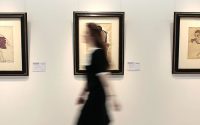Stash of 17th-Century Coins Found Hidden Under Fireplace by Archaeology Student
An archaeology student at the University of Glasgow found a stash of 36 coins that date back to the 17th century under the remains of a stone fireplace at a site associated with Alasdair Ruadh “Maclain” MacDonald, of the MacDonald clan, in Glen Coe, Scotland, according to a report published by the Guardian. It was her first archaeological dig.
MacDonald, who led the clan between 1646 and 1692, along 37 other MacDonald Clan members including women and children, was slaughtered by Scottish government soldiers in the Glen Coe Massacre. The killings were spurred by the MacDonalds’ refusal to pledge allegiance to the newly declared Protestant monarchs of England, William II and Mary II, an ascension opposed by many of the clans in the Scottish Highlands.
The find includes currency from across France, the Spanish Netherlands, and the Papal states, as well as from the reigns of multiple British monarchs including from Elizabeth I to Charles II.
Historians say it’s likely the coins were hidden under the fireplace, which is believed to have been located in a hunting lodge or feasting hall, just before the massacre began. According to the National Trust for Scotland, the attacking soldiers came under the white flag and were given quarter for nearly two weeks before the massacre on February 12, 1692, so it’s likely that some of the villagers were given notice before the attack. Experts speculate that whoever buried the coins did so before the attack, and hoped to one day retrieve them.
“What’s really exciting is that these coins are no later than the 1680s, so were they buried in a rush as the massacre started first thing in the morning of 13 February 1692?” Michael Given, the co-director of the University of Glasgow’s archaeological project in Glencoe, told the Guardian. “We know some of the survivors ran through the blizzard and escaped up the side glens, including this one. Were these coins witnesses to this dramatic story? It’s a real privilege to hold in our hands these objects that were so much part of people’s lives.”



